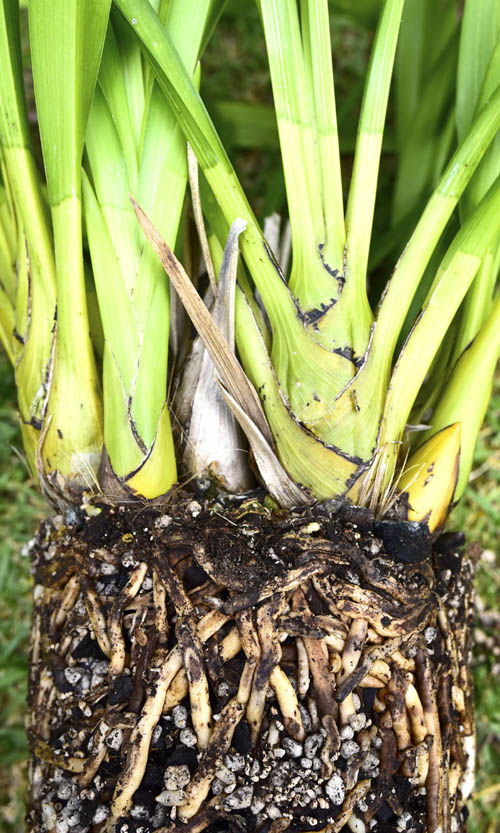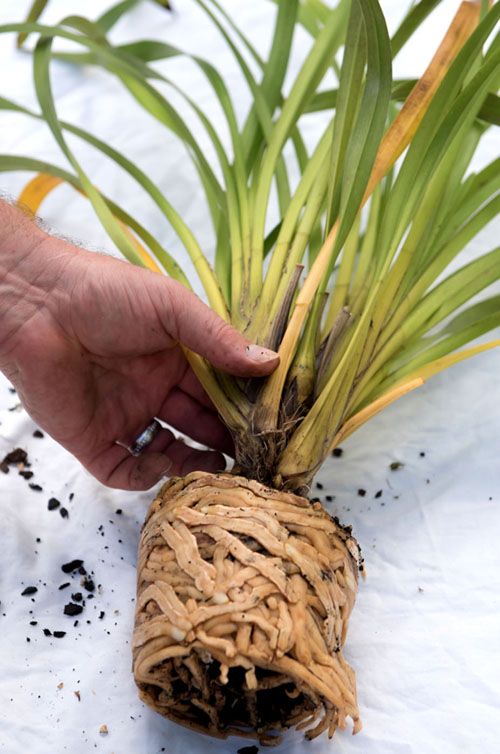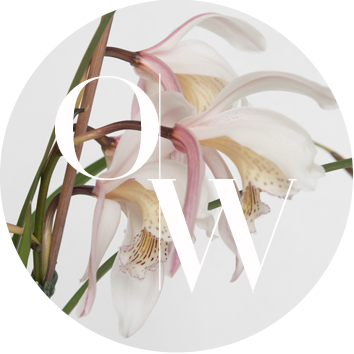After Flowering
How do I get my Cymbidium orchid to Bloom Again?
Preparing Plants After Flowering for the Next Season
It’s the question everyone asks……How do I get my Cymbidium orchid to bloom? Or rebloom? Or why is my Cymbidium orchid not flowering?
Well, the first three or four months after flowering finishes is the most important time of the year, in which lots of small decisions and actions will decide how successful the next flowering season will be.
Most successful growers are busy in the period from Spring to the start of Summer, checking and boosting the condition of their plants and ensuring they can take advantage of that good growing period at this time of the year.
Next seasons flower spikes will be initiated around or just after this time, so it is very important to provide everything needed for your Cymbidium orchid to bloom or flower.
During this time, plants can be divided into three categories:
a. Plants which flowered successfully in the season just finished
b. Plants which should have flowered but did not
c. Smaller plants which are now big enough to flower next season
Plants that have finished flowering, and those about to finish, have been through a stress period. Flowering takes a lot out of a plant, especially if it had a lot of flowers or was in a relatively dark and dry environment e.g. in a domestic building or an orchid club show venue. Artificial lighting and warm, dry, air conditioned atmospheres are not what a Cymbidium orchid enjoys when in flower.
So to begin with, get you plant outside in plenty of bright filtered light and plan a watering regime.

How do I encourage my Cymbidium orchid to bloom?
Inspect each plant and assess if it needs special attention.
Many plants will require potting on, into a larger pot, or dividing into two or three pieces. Some plants just look soft (often dusty). Be prepared to knock the plant out of the pot and inspect the root system. It’s the roots that really tell the story of a plant’s health.
The root system is a good indicator of how happy the plant is. Ideally it will have a tight root ball with mainly firm white, or cream coloured roots as seen above. A plant with a healthy root system is key for good growth, and good growth helps your Cymbidium orchid to bloom.
This condition is great, unless it is completely root bound, with little, or no potting mix visible. This plant was tight in its pot and may require potting on before next season to avoid being pot bound or root bound.
Root Health is important
If it is thoroughly root bound, it is wise to consider potting on. Leaving it for one more year may be ok, but by then, the root system may just be completely overgrown.
If the root ball contains lots of black, soft and hollow roots, or if the potting medium has obviously decayed badly, the plant needs immediate and significant attention.
With sterile cutting tools, secateurs, knives etc, remove all dead or poor quality roots, and most of the decaying potting mix. You may be left with just a few roots, sometimes, virtually none. At our nursery, we generally remove at least half of the roots immediately. Just cut off the bottom half of the root ball, then trim any remaining poor quality roots as required. Don’t be afraid to remove lots of roots. Those you are trimming are usually no good anyway.
The plant will grow new, pearly white roots relatively quickly, if treated well. Repot the plant firmly into it’s pot by packing as much potting mix around it as possible. Don’t plant it too deep in the mixture, but even worse, don’t plant it with the bulbs too far above the surface of the potting mix.
During the process, remove any old leaf husks and any damaged or badly yellowing leaves. If a plant is left with not enough roots to firmly hold it in the pot, without swaying, insert a stake firmly into the growing mix, and tie the leaves to the stake. Plant movement, relative to the pot will break off the new roots, as they appear.
Make sure newly potted plants are watered very regularly. There was a belief many years ago to water recently potted plants sparingly, and force them to seek moisture by growing long roots. That just does not happen. A good watering regime will aid your plant in recovery and encourage your Cymbidium orchid to bloom.

High levels of light are important at this time of year.
It is also important at this time of year after flowering that your orchid receives higher light levels through the Spring until summer. This will assist in recovery and encourage your Cymbidium orchid to bloom again.
A dose or two of seaweed extract at this time is very beneficial. Fertilise regularly, but do not dose heavily. A balanced fertiliser is best at this time of year. We find that most private growers fertilise at a rate higher than what is good for your orchids. An old rule of thumb of fertilising at half the recommended rate is most appropriate. Locally, we are getting great results using the new fertilisers prepared by Neutrog. Seamungus is great from the end of flowering, until the end of January, then swap to Strike Back for Orchids, until flowering finishes. This product is available nationally in Australia.
Depending on the variety, most modern hybrid spikes are initiated during the lower temperatures experienced after Summer, so good light, these lower temperatures and low nitrogen fertilisers are a key to successful flowering.
Your Cymbidium orchid will need an extended length of night time temperatures of around 13 degrees celsius or less to set a spike. It also helps when there is a 10-15 degree change between day time and night time temperatures to encourage spikes to form.
In Autumn use a flower booster fertiliser until you start seeing your spikes to assist with the setting of spikes.
Check also at this stage for pest infestation.
Scale can be a problem. It can be wiped off, or treated with a good insecticide, or oils such as eco, pest, or white oil. Give all the foliage a good spraying to remove dust, grime & insect populations.
This is also a great opportunity to visually inspect and test a plant for virus. Please be very vigilant in relation to Cymbidium orchid virus. It is a very serious issue and a major threat to our hobby, and commercial growers alike. Read all of the virus information on this website carefully, and if you aren’t sure, ask someone or test your plants.
Also, make sure your plants are not overcrowded. All plants expected to flower in the oncoming season should be positioned at least a pot diameter away from it’s neighbour to give them room to receive adequate light, breathe and grow.
What to do with the plants that did not flower?
Plants big enough to flower in the last season but failed to do so, need extra consideration. The grower needs to try and establish why it did not flower. It could just be that it is a shy flowerer. If so, consider culling the plant and replacing it with a more free flowering variety. Go through all the steps detailed previously, and hope it improves it’s flowering in the future, but keep records of its non-performance. If it continues to underperform, discard it. Don’t try to sell it or give it to someone else.
Plants previously not large enough to flower should be potted on into bigger pots, and placed in a good position in the growing area. If the grower has selected new varieties well, these could be the new stars of your collection, and give you a good chance of winning a major prize at a show. Treat them as well as you possibly can. Some may be previously un-flowered seedlings. If you are lucky to get a good Cymbidium orchid to bloom, it could be the start of a special time for you!
This article was originally written and compiled for the Cymbidium Orchid Club of South Australia. It has been edited and updated for use, with permission, on this site.
Orchid Wise Society
With over 30 years of experience joining the Orchid Wise Society is a great way to join other orchid grower enthusiasts around the world. We promise not to overload your inbox with unnecessary rubbish, instead we pride ourselves on providing relevant & interesting information with regards to all things Cymbidium orchids.
We welcome your feedback on

